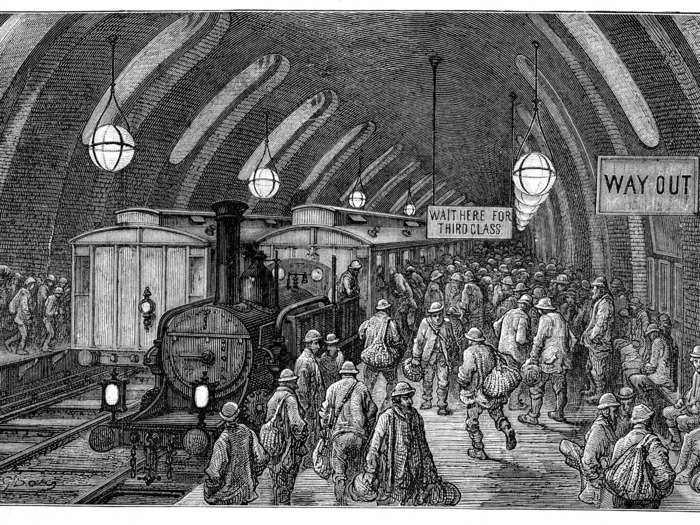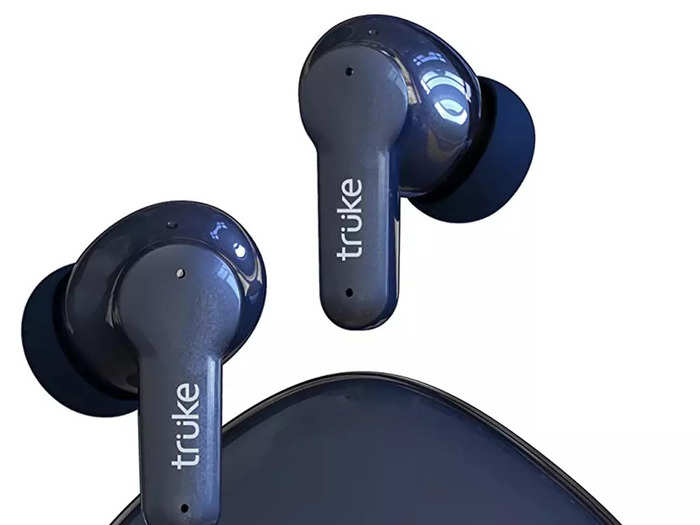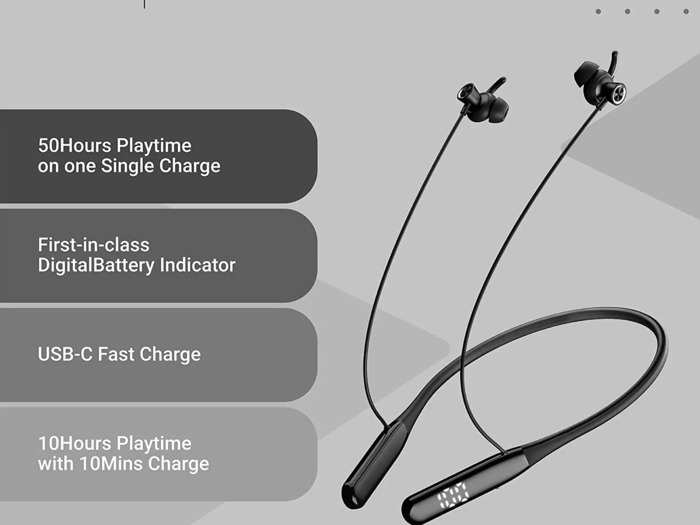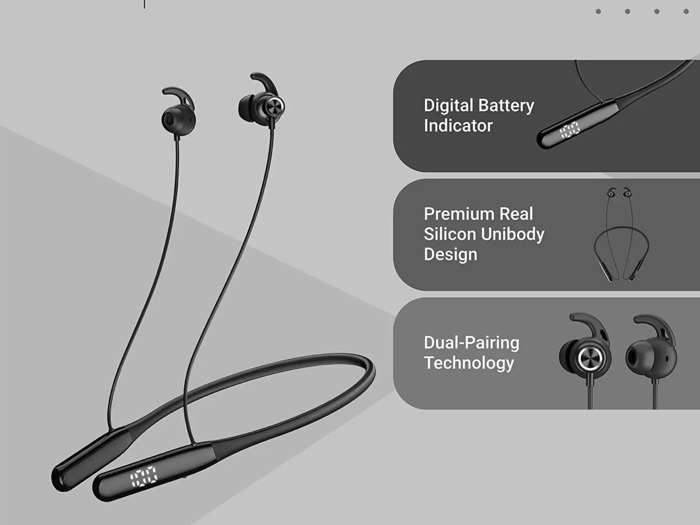THEN AND NOW: Photos that show what train travel used to be like
Paul Oswell

- Trains have changed a lot, from the first steam-powered engines to the high-tech ones we ride today.
- Dining and entertainment have always been a part of the journey, but they've seen much evolution.
The rail passenger experience has changed greatly over the years.

From basic beginnings, trains quickly became a relatively glamorous form of transport, with plenty of amenities if you could afford it.
To show the differences over the years, we rounded up photos from the early 19th century through today, to see how train travel has changed, and what lies in store for the future.
As soon as locomotive technology was invented, it was adapted to carry passengers.

The first passenger train ever produced was the Locomotion No. 1, built in 1825 by the pioneering engineers, George and Robert Stephenson, in northeast England. On September 27 of that year, it transported 11 wagons of coal and 20 wagons of passengers on tracks in Darlington, England with a maximum speed of just 15 mph.
This pioneering engine has since been preserved, and rail enthusiasts can still see a full-scale, replica model of the first train.

Locomotion No.1 was carefully preserved after being retired from service and has been housed in various transport museums in and around the northeast of England, currently residing at Locomotion (formerly The National Railway Museum Shildon). A full-scale replica can also be seen at the Beamish Museum in northeast England.
The first passenger train services started in the United Kingdom.

With the success of Locomotion No. 1, the door opened to viable steam rail networks, first in England, and in 1830, the Liverpool to Manchester rail line opened in the UK.
The same year in the United States, the first public steam-powered rail passenger service began operations in South Carolina, leading to a Transcontinental Railroad by 1869.
Steam trains began to operate worldwide in the 'Golden Age' of train travel.

As rail travel developed into Europe and across the United States, a "Golden Age" of trains arrived, with railroad companies vying for business.
Engine speeds increased, and various flagship services offered increasingly alluring levels of luxury that would stretch well into the 20th century.
From the 1950s onwards, the diesel trains that we recognize today became the norm.

In the years after World War II, developments in diesel engines meant that steam trains were slowly replaced, and by the 1950s, diesel locomotives were the predominant engines in the United States, as the fuel delivered lower operating and infrastructure costs.
Steam trains required drivers to master a complicated engineering setup.

In the early days of locomotion, operating a train was a matter of mechanics. Drivers and engineers had to contend with all manner of levers and gauges as well as the manual stoking of the boilers, and more.
This involved process did deliver impressive results. For instance, the Mallard train broke the rail speed record in 1938 by reaching 126 mph.
Driving trains today is much less complex.

Now, most trains can be driven by one person, with everything controlled electronically or by computer.
Those post-war designs seem clunky by today's standards, and passenger trains have since become more streamlined and efficient.

Modern-day trains are much sleeker than their 1950s counterparts. Though Amtrak's fleet still mainly uses diesel engines, some services are powered by electricity and a few are dual powered.
As train travel took off, mass transit stations became an essential part of the infrastructure.

As rail travel became affordable, large train stations were built in major cities.
Most of the major London train stations that operate today were up and running by the end of the 19th century.
Many historic stations are architectural wonders that are still appreciated and used today.

Large, elaborate train stations became a sign of prestige for cities, and many enjoyed grand architectural flourishes, some of which can still be appreciated today.
Almost all of the world's oldest operating train stations are from the 1830s in England, and many are still used, such as Liverpool Lime Street and London Bridge.
Vitebsky Railway Station in St Petersburg, Russia, is also from around this time, opening in 1837.
Many European stations retain charming original features in ticket offices and departure lounges.

Original fixtures and fittings in older stations were built to last, and especially in Europe, travelers can often still see historic ticket booths, waiting rooms, and facades.
Iconic stations include the gothic architecture of London's St. Pancras International, the Art Deco and Spanish Colonial chic of Los Angeles Union Station, and the baroque grandeur of Metro Station Komsomolskaya, Moscow in Russia.
Now, modern stations reflect contemporary architectural trends and tend to be built from steel and glass.

Terminals now usually include retail outlets and fast food units and are built as transport hubs, connecting to metro lines and bus stations, as seen above in China.
Some contemporary stations are built with future aesthetics in mind.

Terminals are still built to last given what huge investments they are, though it remains to be seen as to whether they will be considered as classic designs in 100 years' time.
Train departure times and passenger information have always been an essential part of any train station.

Passengers arriving at any station have always needed easy access to service information. The split-flat display board (sometimes known as Solari departure boards after their inventor) arrived in the 1950s and its clacking sound became a major part of the travel experience.
These days, information is displayed electronically, updated in real-time.

These days, information can be instantly and remotely updated via electronic and digital means. Passengers can also usually sign up to railway company apps to have information sent straight to their smartphones.
The early control rooms that kept rail networks moving looked very analog.

Train services rely on remote control rooms, with operators making sure that lines are running safely and that collisions and delays are avoided.
For many years, physical levers and switches were needed to make the necessary changes to the tracks and the network.
Everything is highly computerized in modern times.

Although we still need engineers to design and control the networks, their growing complexity is made manageable by the use of computers and digital applications.
Train travel was once considered an occasion worth commemorating.

For many people in the early 20th century, especially those living outside of big cities, train travel was an adventure, and they'd take photos to commemorate the journey, as evidenced by photos from the time, such as the one shown above.
Now, train travel has become routine.

Most people these days use trains for commuting to work or other day-to-day journeys.
You might still snap a selfie if it's a special vacation, but most train travel favors functional over adventurous.
Train ticket prices have changed considerably over the years.

If you wanted to buy a ticket from Seattle to Chicago in 1912, it would have cost you $75 one-way for a sleeper car.
This is the equivalent of around $2,000 of modern-day buying power, adjusted for inflation.
These days, Superliner Roomette tickets on the Amtrak Empire Builder for this same route start at around $900 for a private sleeper room (or around $450 per person, based on double occupancy.
Train conductors were once formally dressed.

The uniforms of railroad conductors have also changed over the years, as seen in this archive photo from Getty Images. A peaked cap and blazer with insignia were the norms from the very early days.
Modern uniforms are more casual.

These days, the uniform is generally a little more relaxed, and probably much more comfortable to wear while working. There are still vestiges of the insignia with the branded epaulets.
Luxurious first-class seating has been an element of train travel from the beginning.

As with air travel, different levels of luxury have been available on trains since the beginning, offering those with more money spacious carriages and elevated furnishings.
In the early days, there were first, second and third classes, with first class resembling an elite private clubhouse, as seen in the above rendering of an early first class Pullman carriage.
Even carriages below the upper echelons once had a strong element of style.

Although third class would have been cramped with basic wooden bench seating, second class travel still seemed relatively comfortable, based on the photo of the section above.
Modern, long-distance train travel can still offer added space and privacy.

Passengers today can still pay for extra privacy and space on long-distance services.
For example, the contemporary Superliner roomette cabin on Amtrak has a range of amenities and pull-out seats that form flatbeds so that travelers can sleep in comfort. An upgraded bedroom is the current top-tier private cabin offered by Amtrak
Special seats are available on some train routes with outstanding views.

Along scenic coastlines on seven routes in the United States, some Amtrak trains have observation cars with floor-to-ceiling windows and special sightseeing seats that are positioned to take full advantage of the passing panorama.
You can view the Rocky Mountains from the California Zephyr, for example, or the Cascade Mountains on the Coast Starlight route.
Dining cars have been a part of rail travel from the earliest days.

On longer journeys, fine dining facilities were intended to replicate a five-star restaurant experience.
Seven-course dinners with lobster and roasted meats were served, and vintage wine poured by silver-service waiters.
This civilized approach to dining endured in First Class services.

Passengers dining in the Great Western Railway dining car (above) can be seen here enjoying a three-course meal attended to by a uniformed server.
These days, mealtimes on Amtrak trains are less formal.

Today, the dining experience is not as fancy, but the menus are still well-loved and a welcome addition to the journey.
Some modern European train services have retained a semblance of the old luxury.

In Europe, you can still ride carriages that were originally designed by the Pullman Company.
Some of these companies still employ waiters to serve freshly-prepared food to first-class customers.
Of course, if you have the means, you can still dine surrounded by finery.

The Golden Eagle Trans-Siberian Service, for instance, serves high-end Russian delicacies such as Chicken Kiev and Olivier Salad in an opulent dining car.
On-board entertainment was limited in the early days.

There wasn't much in the way of portable entertainment available when train travel started, other than bringing a newspaper or a book onboard.
In the above photo, in 1930 on the London North Eastern Railway in the U.K., was a special 'gramophone carriage.'
Many trains now come with Wi-Fi.

Now, passengers may stream movies, TV shows, and music throughout the entire trip as Amtrak offers their own Wi-Fi network onboard.
The future of train travel is exciting, and fast.

One of the most famous modern train designs is that of the Bullet Trains (in Japanese, 'shinkansen').
These trains have been operating in Japan for over 50 years now, and are still among the fastest and most reliable services in the world. The fastest speeds on some routes are around 300 mph.
And in 2021, China debuted a 'maglev' (magnetic levitation) bullet train that can reach speeds of over 370 miles per hour.
Future train travel will likely continue to change.

We've come a long way since those 15 mph speeds of Locomotion No.1 almost 200 years ago, and time will tell how train travel will continue to evolve.
Popular Right Now
Advertisement